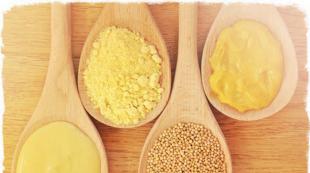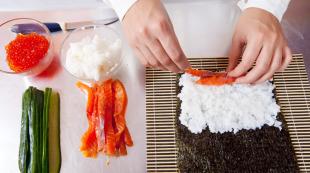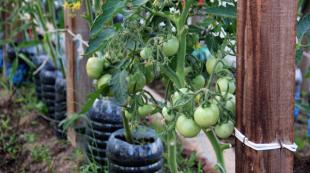Do-it-yourself soft roof. Mounting technology
The process itself is quite simple and does not require the use of complex fixtures or professional tools. Before you do the installation of a soft roof with your own hands, read the advice of experts on performing such work.
Soft roof installation bases
A strong homogeneous base can be built different ways.
- As a base for a soft roof, almost all manufacturers strongly recommend the use of moisture-resistant fiberboard, OSB or moisture-resistant plywood. These materials provide maximum strength, an ideal surface, the greatest comfort and safety of walking on the roof during roofing works. It should be noted that fiberboard, OSB and plywood are completely unsuitable for nailing. Therefore, for plates, instead of a hammer, you will have to use a screwdriver, and for plywood, you will also need a drill. Otherwise, there is a risk of delamination of the sheet at the place where the screw is screwed.
- The second option is a cut board. It is cheaper than plywood or particle board, easy to process and suitable for nailing. When installing edged boards, it is imperative to provide for technological gaps of 2-5 mm, compensating for changes in the size of the tree due to humidity and temperature. The smaller they are, the less the roofing material will sag in them, heated under the action of high temperatures. But, if you forget about these gaps, there is a risk of protrusion of the boards, which will inevitably lead to local destruction of the soft roof. It is especially great if you lay boards in hot weather when elevated temperature, which is wrong because the tree dries out. When it rains, the boards will swell from moist air and, for lack of space, will begin to arch and ruin the roof.
- The most convenient and the right option there will be the use of a tongue-and-groove board as a base for a roof, largely devoid of the disadvantages described above. It is available in all regions of the Russian Federation, and its cost is not much higher than a regular edged board.
Tools and materials for work
For work you will need:
- a knife with a thin blade (the resinous base of the soft roof sticks more strongly to the thick blade);
- hammer, nail gun, screwdriver - depending on the hardware used;
- blowtorch for pitching roofs - when using roofing material for roofing;
- sealant, bituminous mastic or other adhesive materials;
- roofing nails, screws;
- work gloves;
- if necessary - safety ropes and other safety equipment.
Soft roof device laying technology
The word "soft" in the name of the roof characterizes it physical properties. Under this name, not only modern coatings from all kinds of bituminous tiles fall, but also a slightly outdated classic roofing material. Do-it-yourself soft roofing from these materials is laid in different ways, so we will consider them separately.
Ruberoid. A budget option
Since domestic roofing material is quite cheap, the roof from it fits into the lowest budget. Moreover, roofing material or its cheaper analogue, roofing felt, can also be used as a lining layer. Unlike soft tiles, roofing material does not have a self-adhesive layer. Therefore, it is laid on molten resin, or hot viscous bituminous mastic. Installation of a soft roof according to the second option is preferable, since it is possible to do without the dangerous use of a special burner directly on the roof to melt the resin.
Base for roofing material
Under the roofing material, experts recommend equipping a double crate with a shift in the direction of the boards of the upper and lower layers of about 45 degrees. The low price allows you to stack it in two, three or even more layers. Therefore, such a strong roof is used even on flat roofs, of course, paying special attention to the thoroughness of gluing and sealing all seams, joints to walls, pipes and other protruding structures.
Calculation of the amount of materials
The amount of material is calculated very simply. The area of the roof is divided by the area of one roll and rounded to the nearest whole number of roofing material. The consumption of mastic and resin strongly depends on the type of base, the planned number of layers and the type of roofing chosen.
Do-it-yourself soft roofing
On flat roofs, the roofing material is laid parallel to the cornice line. Laying starts from the bottom, and each subsequent layer overlaps the previous one. The overlap is 10-15 cm. Steeper slopes are covered from the ridge to the eaves. Depending on the design of the roof ridge, the roofing felt tape is thrown over it or adjusted to the ventilation system of the ridge strip.
BN-U or BN-1U bitumen, diluted in kerosene to a thick viscous consistency, serves as glue and sealant for the base. To glue the strips together, you need to use hot bituminous mastic.
Soft tile roofing technology
Unlike ruberoid, soft tiles is issued in the form of separate curly elements - a shingle. This type of coating has a multilayer structure, reinforced with fiberglass and polymeric bitumen, which retains its viscosity for several decades. Each shingle is generously sprinkled on top with mineral chips, basalt colored sand or ground quartz. The sand covering of the roof protects the viscous base from overheating by the hot sun and does not allow bituminous resin to drain at the steepest slope of the roof.
Calculation of the amount of materials
Each manufacturer gives its own recommendations for calculating the required amount of material. To calculate the material for roofs of complex configuration, you will have to make a drawing of the surface to be covered and calculate the number of shingles using a graphical method. The number of rolls of lining material is equal to the surface area of the roof.
Soft tiles are usually fastened with nails, less often with screws. Their weight in kilograms is total area area to be covered (in sq.m) divided by 10. The amount of adhesive used at the points of attachment to protruding elements (pipes, walls, ventilation, etc.) is determined based on the total length of all adhesive joints.
Soft roof tiles, installation procedure
Before the installation of the tiles, a special durable and waterproof lining material is laid. If the slope of the slope is less than 20 percent, the lining is laid over the entire surface. With a greater slope - it is mounted only along the ridge, along the cornice, along the ends and at the docking points to the protruding elements. The lining is laid parallel to the cornice line, starting from the bottom, with an overlap of layers of about 10 cm. The first row is glued along the cornice and fixed along the perimeter of the canvas with nails in increments of 20 cm. The last layer is also glued along the ridge. Bituminous mastic is used on the ends of the roof.
After the lining of the roof is laid, begin to mount the tiles themselves. In order not to cut shingles and save on material, a strip of the same collection as the tile itself is taken for the first under-eaves layer. In extreme cases, to get such a tape, you can simply cut off the protruding petals from the soft tiles.
The next layer is overlapped in such a way as to overlap the joints and seams of the lower strip. For the same purpose, each subsequent layer is shifted relative to the previous one by half a petal. All shingles must be mixed prior to installation to avoid color differences between batches.
Outcome
Given all the described nuances, the installation of a soft roof is easy, fast and does not require the involvement of a large number of workers. A beautiful modern reliable roof will become the pride of the owner for the important and high-quality work done by his own hands.
Man, at the dawn of his history, learned to cover the roof of his dwelling with various soft materials. Today there are many types . The soft roof installation video shows how convenient it is to cover housing with such flexible and pliable materials. What are the options for arranging a soft roof? What is the production technology for the installation of soft roofing? These questions are asked by everyone who is interested in the opportunity to equip the roof of their house with the help of modern and beautiful roofing materials.
As the name implies, this type of roofing is flexible and elastic. You can see and feel these qualities with your own eyes only if you touch them with your hands or look at the video. Installation of a soft roof on complex roofs, thanks to these properties, often becomes the only possible option. Soft roofing materials have many other advantages.:
- no installation difficulties, no need for bulky equipment and a large number of workers;
- such a roof itself is a waterproofing material, so additional layers are sometimes not needed at all;

- due to the low specific gravity, the load on the structural elements of the roof is significantly reduced, which makes it possible to save on other materials;
- ease of repair. In case of damage, only a small area is changed;
- there is no strong noise during rain, which is important for residential premises located on the attic floor;
- when installing a soft roof, the laying technology is such that almost no waste remains;
- corrosion of such materials is not terrible, since they do not have a metal component;
- Some materials are not very expensive.
This type of roof, like any other, has a number of disadvantages.:
- the fire resistance of soft materials is weak, since bitumen is often their basis. To a greater extent, this is true for roofing material and roofing felt. Modern technologies allowed to increase fire resistance to acceptable levels;

- under a soft roof, the installation of a continuous crate is mandatory, which increases the total cost of work. The exception is, which is somewhat stiffer than other materials, so its installation is also possible on the crate with small gaps;
- poor thermal insulation properties, which makes necessary styling insulation.
All these pluses and minuses are to varying degrees inherent in various materials for the installation of a soft roof. The laying technology is also different for everyone.
Installation of flexible tiles (video)
Types of materials for soft roofing
Materials for the installation of soft roofs are of the following main types:
- Bituminous mastics. They are rarely used in private construction, as they are mainly used to cover horizontal or slightly sloping surfaces.
- polymer membranes. Made from PVC and other polymers. They are glued to the prepared screed using adhesives.
- Roll covers. There are self-adhesive or requiring heating.
- Soft tiles. The most popular and expensive material. Due to the variety of shapes and colors, it has gained great popularity. It is a piece product.
- Ondulin. Slate-like, ribbed sheet material made from cellulose and bitumen. Possesses properties of rigid and soft roofing materials.
All these materials are completely different technology laying of a soft roof. The device of the roof requires careful selection of the most suitable of them.
Installation of shingles Shinglas (video)
Soft roof device: technology for laying rolled materials
Roll roofing materials include: roofing material, roofing felt, glass roofing material, glass oil, tecloizol and euroroofing material. All of them have a similar production technology. A layer is applied to the base of cardboard or fiberglass bituminous mastic with polymer components. If ordinary roofing felt and roofing felt, belonging to the first generation of materials, are not very popular today due to a short (5 years) service life, then the rest are actively used in construction. Modern roll materials have several colors and 20 - summer term operation. This allows them to cover roofs industrial buildings, hangars and outbuildings.

Roll materials are not very convenient for soft roofing. The laying technology is too complicated and laborious. It is important to remember that this species materials can only be laid on a roof with a slight (up to 30 degrees) slope. Before starting the main work, the base is leveled, waterproofing and vapor barrier are laid, mastic and primer are prepared.
Sticking starts from the far corner from the place of lifting to the roof. The material is glued to the base using mastic, which is heated by a burner. In the case of a self-adhesive coating, this condition is not necessary. Usually several layers are laid, so that the joints overlap with the next layer. Their number depends on the angle of the roof. If the roof is flat or tilted no more than 5 degrees, then 4 layers must be done, up to 15 degrees - 3 layers, and above 2 layers are enough. Each layer of glued material is rolled.

Helpful advice! If air bubbles are found on the roof surface during operation, it is necessary to cut them with a knife. After that, press the place of the cut tightly until the mastic flows.
The use of rolled materials is more justified in the construction of large industrial facilities or apartment buildings with flat roofs. For private housing construction, a roof made of soft tiles is better suited.
Soft roof device (video)
Soft roof device: technology for laying piece materials
Soft or bituminous tile is a piece material of small size. Its length is 1 m, and its width is 33 cm. Thanks to this, all installation work can be done by one person. Each canvas is divided into 4 parts in the form of different geometric shapes and resembles a classic tile.
Before laying soft tiles, the base is prepared. The crate must be continuous. It is often made from plywood or similar sheet materials. If necessary, on the entire surface or in separate places that require special attention, the lining carpet is laid under the soft tiles. It is a special rolled material that contributes to additional waterproofing.

Laying sheets starts from the eaves. The main thing is to lay the first row exactly, then it will be easier. Sheets are glued with mastic and punched with nails at the perforation points. At the final stage, the ridge and wind sheets are installed. A typical representative of shingles is a shinglas soft roof, the installation video of which shows the simplicity of the work being done, even on complex roofs of private mansions.
Helpful advice! It is best to lay bituminous tiles in hot weather. This contributes to better bonding of the material.
Whatever the soft roof made of piece materials, the use of a lining carpet for soft tiles, insulation and vapor barrier is an indispensable condition for its normal functioning.
Do-it-yourself installation of shingles (video)
As roofing any waterproof material can be used. But it is also important that they are resistant to temperature extremes, ultraviolet radiation and mechanical damage. All these characteristics are soft shingles.
In the process of work, the following scheme of a soft roof roof is used. First, the rafters are installed and the vapor barrier is laid, then the insulation layer is placed, it is waterproofed, and at the end the roofing is laid directly.


soft roof - scheme
Preparatory steps: installation of rafters and insulation

To install a soft roof with your own hands, you must first prepare basis. First, a secure roof structure. For her, they take a bar with a section of 15x5 cm. rafters placed at a distance of about sixty centimeters. The configuration of the roof depends on how they are located. The advantage of soft tiles is the possibility of laying them on a roof with any slope and other features. After installing the truss system, all wooden parts must be treated with antiseptic compounds.

High-quality arrangement of a roof from a soft roof requires mandatory use vapor barrier. The material is laid parallel to the eaves, from above, starting from the ridge, and moving down.



 installation of a soft roof instruction. A photo
installation of a soft roof instruction. A photo 
Individual strips are laid with an overlap of ten or fifteen centimeters. Joints are insulated with foil adhesive tape. Attach the vapor barrier to the rafters with a construction stapler. 
The required step is warming soft roof. Plates are used as insulation mineral wool . They are placed on the outside in two layers, having previously completed the rough sheathing of the rafters from the side of the attic.
The first layer is laid in the space between the rafters. The insulation is laid perpendicular to the line of the eaves. The thickness of the first layer of mineral wool is about fifteen centimeters, which corresponds to the dimensions of the rafters.
 installation of a soft roof. A photo
installation of a soft roof. A photo
In order for the insulation of a soft roof to be as effective as possible, a second layer of mineral wool is required. For its installation, a counter-beam is fixed at a distance of sixty centimeters from each other. The beam is taken with a section of 5x5 centimeters. Position it in such a way that the second layer of mineral wool is laid parallel to the eaves. Such insulation of a soft roof covers almost all cold bridges.

The heater is covered vapor diffusion membrane. It releases steam from the material, but does not allow moisture to penetrate into it. The membrane is laid parallel to the eaves and fixed with a construction stapler. At the joints, overlaps of ten centimeters or a little more are made, and then they are glued with self-adhesive tape.


soft roof installation step-by-step instruction. A photo


Do-it-yourself soft roofing
If we consider the scheme of the roof device from a soft roof, then we can pay attention to the presence ventilation gap between the steam vent membrane and the base of the roof. Just five centimeters is enough for the air to circulate freely.
Another layer of counter-beam helps to create a ventilation layer, which is already parallel to the rafters. Such a roof device made of soft roofing is the most optimal.
Elements with a cross section of 5x5 cm are used as a counter beam, placing them at a distance of 30 cm. The bars are not laid back to back, but breaks are made by about five centimeters. 
Do-it-yourself installation of a soft roof with your own hands is performed as follows.
On the crate of the counter beam is fixed OSB boards with moisture resistance. It is required to leave gaps of approximately four millimeters between individual sheets. Differences in height should not exceed two millimeters.


In the process of installing a soft roof, be sure to take care of the installation drainage system. Immediately after fixing the OSB boards, hooks should be installed that will hold the gutter. Then the installation of the gutter and all other parts of the drain, including funnels and pipes, is carried out.

 roof soft roof installation. A photo
roof soft roof installation. A photo





do-it-yourself soft roof A photo
Further, the installation of a soft roof with your own hands involves laying on the surface wood-based waterproofing material. It is placed with overlapping seams. Longitudinal overlaps should be at least ten centimeters, and transverse - twenty. All seams are additionally sealed. To do this, they are treated with bituminous mastic.






To perform the installation of flexible tiles, mark the roof. Then the material is laid and fixed with sharp nails with a galvanized surface. Begin the installation of flexible tiles from the eaves. It is laid in rows, rising towards the ridge.








The next step in the installation of a soft roof is laying ridge elements. In order for the individual elements of the flexible tile to lie tightly, not to be blown up by the wind, they are fixed with the help of bituminous materials.


Completion of installation of shingles closing joints and careful isolation. Be sure to close the slats where the roof adjoins the pipe, walls or other elements. Also, at the end of the installation of a soft roof, all additional work. such as installation skylights, snow retainers, spotlights on cornice suspensions and other things.


Installation of a soft roof video instruction
Video installation of a soft roof
Photo of a roof with a soft roof
The relative ease of installation of flexible tiles is not the only plus of such a roofing. It should also be noted the variety of appearance.
The gray-blue roof of the house perfectly emphasizes the brick color of its walls. The shape of the individual elements of the tile is hexagonal, which creates an interesting pattern and visual effect. Roofing is similar to scales. Uneven color enlivens the surface and makes it voluminous.

Soft roof photo
Light brown roofing is distinguished by discreet neutrality. It does not draw attention to itself, but emphasizes the beauty of the building itself and the roof of a complex shape with many planes. The elements of the tiles are square, which echoes the stone wall, which is visible on the right side. 
Soft roof photo
The dark brown material with rectangular elements looks austere, but it makes the complex shape of the roof more attractive. The dark color sets off the light walls of the house and is supported by other brown elements on the facade of the house. 
Soft roof photo
The roof is covered with soft hexagonal tiles. The presence of a color transition and lighter spots makes the roof surface visually more interesting. It is quite dark and therefore does not merge with the rest of the building. 
The simplicity of the form of this flexible tile is balanced by an interesting combination of matte and textured surfaces. A roof with such a coating will look strict, but at the same time elegant. It will decorate any home with the appropriate color scheme. 
The use of a soft roof in a private suburban construction is one of the hottest topics today. This material has many advantages. It has a low weight, high sound and heat insulation qualities, is resistant to corrosion, fungi and microorganisms, guarantees the absolute tightness of the roof, gives it a very attractive look.
It can be used to cover roofs of a wide variety of configurations. In addition, the soft roof has long term operation and low cost. Another important advantage of this material is that during rain the noise level is quite low.
In addition to high technical and operational characteristics, soft roofing has another advantage: it is so easy to install that you can even handle the work on your own.
General characteristics and types of soft roofs
Soft roof- modern construction material, made on the basis of fiberglass sheets impregnated on both sides with rubber bitumen.
A distinctive property of rubber bitumen is a high degree of tightness and moisture resistance. It is these qualities that explain the popularity of this roof in modern construction. Soft roofing also contains a special dressing, which increases its wear resistance and does not allow the rolled coating to stick together.
This material is an ideal choice for covering roofs with an inclination angle of less than 11 degrees.
Soft roofing includes flexible, or bituminous tiles, rolled, or membrane roofing.
Soft tiles
Soft flexible, or bituminous tiles are otherwise called piece soft roofing, roofing tiles, shingles, shingles. Perhaps this is the most common type of roof, which is an analogue of the ceramic variety of tiles.
Soft tile is a flat sheet with figured patterns cut out on one edge. The basis of soft tiles is non-woven pressed fiberglass, which can withstand heavy loads and is almost not subject to deformation. This type of tile is different forms: triangular, oval, hexagonal. Usually it has a size of 1x0.33 m.
One of the main advantages of soft tiles is the possibility of using them to cover roofs with domes and towers or unusually shaped roofs.
Roll roofing
The second name of this type of roof is bitumen-polymer. Often it becomes the only solution for roofing of agricultural buildings, reinforced concrete and brick buildings.
Roll roofing is made on the basis of fiberglass or a material of synthetic origin. This guarantees high waterproofing properties material.
The disadvantage of rolled roofing is its vapor permeability.
Since a burner is used when laying a rolled roof, it is necessary that the material does not burn, but melts. Otherwise, the installation cannot be of high quality.
Membrane roof
Another name for membrane roofing is PVC membrane roofing. It is a membrane made of TPO, EPDM and PVC.
 One of key features technology of this type of roofing is that the seams are fixed with hot air, and this guarantees high level their strength. The membrane is attached mechanically with the help of additional adhesives. Fastening can also be carried out to the roof screed. Thanks to the membrane structure, strength, reliability of the blade and a long service life are guaranteed.
One of key features technology of this type of roofing is that the seams are fixed with hot air, and this guarantees high level their strength. The membrane is attached mechanically with the help of additional adhesives. Fastening can also be carried out to the roof screed. Thanks to the membrane structure, strength, reliability of the blade and a long service life are guaranteed.
Required styling tools
Laying a flexible roof is within the power of even one person. For installation of a soft roof, the following materials and tools are required:
- a hammer;
- sealant;
- mastic;
- roofing nails;
- trowel for mastic;
- ridge-cornice strip;
- waterproofing carpet;
- end and cornice strips;
- work gloves.
Ventilation system device
aim ventilation system is to ensure free air circulation, which is necessary in order to prevent the formation of condensate in the lower segment of the base. Without high-quality ventilation, rotting processes can begin in the rafter system, and icicles or ice will form in winter.
The main parts of the roof ventilation system are outlets and air vents, gaps between the base and waterproofing of at least 5 mm in size. Provide natural ventilation possible by means of ventilation holes, evenly distributed under the cornice overhangs.
Installation of cornice strips
 Cornice strips are made on the basis of metal and are attached to the lining on the overhangs of the cornices. They are necessary to protect the edges of the crate. Fastening is carried out using mounting nails, between which a 100 mm step must be maintained. In the places where the cornice strips are joined, an overlap of at least 20 mm in length must be made.
Cornice strips are made on the basis of metal and are attached to the lining on the overhangs of the cornices. They are necessary to protect the edges of the crate. Fastening is carried out using mounting nails, between which a 100 mm step must be maintained. In the places where the cornice strips are joined, an overlap of at least 20 mm in length must be made.
Installation of gable slats
Gable strips are also made of metal and fastened in the roof ends to the lining layer. Their main function is to protect the edge of the crate. Fastening is carried out similarly to the fastening of cornice strips.
Valley carpet
The purpose of the device of this element is to protect the roof from rain and snow. It is chosen according to the color of the tiles. Fastening is done with roofing nails. Overlaps should be carefully glued.
When performing installation, remember to remove the protective film from the bottom surface of the material. Cornice tiles are laid at a distance of 1 to 2 cm from the cornice edge along its overhang, clearly butt to butt.
Laying ordinary tiles
The process of laying the main part of the tile roof begins from the middle of the overhangs towards the ends. As a rule, 4 nails are used to fasten sheets. With a very steep roof slope or the presence of strong winds, at least 6 nails should be used.
The installation of the first row is carried out in such a way that its edge is located at a distance of no more than 1 cm from the upper end of the cornice tiles.
The joints are covered with petals. When laying the next rows, it is necessary to ensure that the tips of the petals coincide with the level of the cutouts of the previous row. At the edges, bituminous tiles are cut and glued (to a width of at least 10 cm).
Before laying, it is necessary to mark the slopes with chalk - draw horizontal lines on them. This is necessary for accurate installation of sheets in an even row. If the geometry of the slopes is violated or additional elements are installed on them (dormer windows, pipes), marking using chalk helps to align the rows.
Laying ridge tiles
 To obtain a ridge tile, the cornice tile is cut into three parts at the perforation points. After that, it is laid with the short side on the skate parallel to it. Each of the parts must be nailed with four nails: two on each side. On top of the nails, at least a 5 cm overlap is made with the subsequent tile sheet.
To obtain a ridge tile, the cornice tile is cut into three parts at the perforation points. After that, it is laid with the short side on the skate parallel to it. Each of the parts must be nailed with four nails: two on each side. On top of the nails, at least a 5 cm overlap is made with the subsequent tile sheet.
Lining layer
In places of possible leaks, it is necessary to create a lining layer: at the ends, valleys, overhangs of cornices. During installation, it is necessary to observe the direction from the bottom up and the overlap: in the transverse direction it should be 10 mm, and in the longitudinal direction - 150 mm. Places of overlaps are smeared with bituminous mastic.
Skates and valleys are respectively reinforced by 250 and 500 mm. At the same time, the valleys are equipped with a lining layer on both sides, along the cornice overhangs and ends it is laid to a width of at least 400 mm.
The lining is nailed to the base every 200 mm using galvanized roofing nails. The purpose of the lining carpet is to protect against moisture, as well as from destruction if the process of laying a soft roof is suspended.
Preparatory work
The base for fastening a soft roof must certainly be solid. This is the main difference between installing a soft roof and laying roofs of other types.
For example, when installing a metal tile, a crate is made with gaps between the bars, since this is a rather rigid material. This distinguishes it from a soft type roof, for which it is necessary to arrange a solid foundation.
When choosing an edged board, it must be kept in a pile in advance so that it reaches a natural, uniform level of moisture.
Boards are best purchased in the winter and used in the summer.
Their width should be no more than 100 mm. It is preferable that the material be of the same thickness and sawn into band saw. The maximum allowable wood moisture content is 20%.
The method of laying a soft type roof involves laying materials of this type with a shift of seams or apart. At the same time, a gap of 1 cm must be maintained between them. The surface must be smooth, dry, clean. The quality of the installation and the service life of the soft roof depend on these conditions.
A prerequisite is the presence of the following layers in the roofing cake: a waterproofing layer laid on the rafters, mounted with outside overlapping on the base of the waterproofing roofing carpet, and when planning the attic - insulation based on mineral wool.
Features of installation of a soft roof
 Installation of a soft roof is best done in dry, warm weather. The minimum temperature for work is not lower than plus 5 degrees.
Installation of a soft roof is best done in dry, warm weather. The minimum temperature for work is not lower than plus 5 degrees.
If necessary, installation in winter time before starting work, the tiles must be kept in a room with room temperature. You can also use a hot air burner.
The need for a certain temperature regime associated with the specifics of the shingle, which is a sheet consisting of 3 or 4 tiles. It is attached to the surface with nails or located on inside self-adhesive layer.
Tightness of a roof on the basis of a tile is provided by influence of natural heat of sunshine. Under their influence, the sheets are soldered to the base and to each other. At low temperatures, this does not happen, so it is not possible to achieve high-quality insulation.
When installing a soft roof, you should use tiles from 5-6 packages at the same time, while choosing one element at a time: this will allow you to avoid significant differences in shades if it is necessary to repair the roof using elements from another package.
This quality is another advantage of this material: a slight overflow of colors and shades greatly facilitates the replacement of tiles and gives its matte surface a more beautiful look.
How to choose a mask?
 When laying the top layer of a soft type roof, it is necessary to use a special bitumen-polymer material, which makes it possible to create an elastic continuous coating that can withstand mechanical and thermal deformations of the base.
When laying the top layer of a soft type roof, it is necessary to use a special bitumen-polymer material, which makes it possible to create an elastic continuous coating that can withstand mechanical and thermal deformations of the base.
According to the soft roof installation technology, in order to attach the rolled material to the roof, cold and hot mastics must be used.
As a rule, cold mastics are used for the device of the inner layers of the roof, and hot - for the outer coating.
The category of cold mastics includes bitumen and roofing material, and hot - roofing felt and tar. The composition used must necessarily contain bitumen, a dusty mixture or a fiber-based filler. From pulverized materials, gypsum, lime and ash should be distinguished.
Preparation of bituminous mastic
Bituminous mastic can be purchased ready-made, or you can cook it yourself. To do this, you need to take bitumen and filler. By mixing two parts of bitumen and diesel fuel and one part of the filler, you can get a cold mixture. In one boiler, it is necessary to prepare diesel fuel and filler, and in the other, heat bitumen (its temperature should be brought to 180 degrees). After complete evaporation of the liquid from the bitumen, the contents of both boilers are mixed.
To make hot paste you need a boiler. In it, the bitumen is heated up to 200 degrees. In the process of heating, a filler is added to it. It is very important to ensure that during the procedure the temperature does not fall below 160 degrees.
To check the quality of the mastic, it is heated to 60 degrees and laid at an angle of 45 degrees. If the coating flows down, then its quality does not meet the requirements. If the mastic does not drain, you must wait for it to dry. If the material is of high quality, then cracks will not form on it.
The process of laying a soft roof

Immediately before laying, you need to walk along the wooden surface with a solution of bitumen and diesel fuel. Then you need to start covering with mastic. This should be done slowly.
At the end of this process, it is necessary to proceed to the laying of glassine and roofing material. Installation starts from the middle part of the eaves and moves towards the ends - to the right and left. Before laying on the wrong side of the soft tile, it is necessary to remove the film to protect the adhesive.
When using cold mastic after applying the layer, you must wait 12 hours. If hot mastic is used, the layers can be applied one after the other.
All details of the roof must be nailed with 4-6 nails.
The instruction for laying a soft type roof requires that an overlap of 7 to 10 cm be made during the installation of the rolls.
In all cases, without exception, it is necessary to observe the basic rule of imposition: lay each top row in such a way that the joints of the previous one are closed. Depending on their number, the next new layer is displaced: with two layers it is displaced by half, with three - by 1/3. After that, the excess is cut off at the edges and glued with mastic.
With high-quality laying, modern soft roofing materials can last about 30 years.
Laying roofing material near ventilation pipes
- Roof sections located around pipes and antennas require correct insulation of joints and careful fixing of the material. The installation process is greatly facilitated by the use of through elements. Without these components, the tightness of the coating is broken.
- Places for installation of ventilation and pipes should be noted even before the laying of tiles.
- After that, holes are cut. The edges of the underlayment will be glued around them with mastic. The upper surface of the carpet should be smeared along the contours of the parts that will need to be glued and nailed. The tile is laid on top of the mastic.
- The junction points of the upper part of the passage part and the shingles must be treated with a sealant. Having reached the ridge line, it is necessary to use special ridge elements of a soft roof. They are bent over the ridge, glued on it and nailed with nails.
Repair work
 The frequency of repairs is directly dependent on the base on which the tiles were installed, as well as on the price of laying a soft type roof.
The frequency of repairs is directly dependent on the base on which the tiles were installed, as well as on the price of laying a soft type roof.
Wood lumber, concrete and cement screeds react differently to soft roofing, which causes certain damage.
Cleaning the damaged area
Before starting work, it is necessary to decide whether there is a need for such work at all and in what form they should be performed. For this purpose, a damage assessment is carried out. When holes are formed in roll coatings, they will need to be filled with mastic. In this case, it is necessary to observe the sequence of materials used for this purpose.
Repair roll roofing it is possible only on a completely clean area, which is very problematic, since there is a special dressing on the roofing material. Therefore, before starting repair work, it is necessary to thoroughly clean the required area.
The crumb is removed using process oil. When cleaning roofing, it is better to use anthracene oil, and for roofing material - solar oil. These products remove the powder and soften the surface for further work.
Repair
Having prepared the site, you can proceed to the main work. If the flaws are small, then it is recommended to use a simple mastic with a patch. This solution will not work if all roofing layers are pierced.
If several layers are damaged, then the area should be cleaned of the old layer of mastic and dried. Then a mastic mixture is prepared with sawdust or sand. All damage is puttied with this mixture to level the edges. From all ends of the patch, the mastic should go at least 10 cm. 
To apply the mixture in hard-to-reach places, use a conventional spatula. If a water bubble appears in the roof, then the repair is carried out in the same way as with a conventional hole. In this case, the main task is to determine the source from which the water comes.
If cracks appear, the roofing layer must be cut to the bottom edge. After that, debris and mastic are cleaned, and then the site is dried and filled with new mastic. For small cracks, incisions can be omitted. They are closed with a patch and mastic. When small cracks appear throughout the area, it must be prepared and covered with a layer of heated mastic.
Powder recovery
After completing the repair, you should restore the layer of dressing. This is necessary to prevent overheating and melting of the mastic layer. It is necessary to level the surface and cover with a layer of sand. The excess topping that has not stuck to the roof will be removed over time.
FINDINGS:
- Soft roofing is very popular due to its lightness, tightness and affordable price.
- Soft types of roofs include soft tiles, rolled and membrane roofs.
- Prior to installation, a ventilation system must be installed.
- In places where leaks are possible, it is necessary to mount a lining layer.
- Before starting the installation, it is necessary to prepare the base.
- For achievement of tightness of a covering of work it is better to carry out in dry warm weather.
- To attach the rolled material to the roof, cold and hot mastic is used.
- To maintain the tightness of the soft roof, it is necessary to properly isolate the skirmishes near the ventilation pipes, and to fix the material very carefully.
- The frequency of repair of a soft roof largely depends on the quality of the installation of the base.
You can learn more about the technology of laying a soft roof from a training video.
Roof covering materials, united by the common name "soft roof", also have a common feature: they are installed only on a solid base. Soft roof installation which can be performed on various types roofs - nothing more than a waterproofing carpet that does not require additional waterproofing. These are bituminous tiles, euroruberoid, mastic materials and polymer membranes.
The use of bituminous tiles is justified when the roof plane minimum slope in relation to the horizontal is at least 12 degrees. If the slope is less, moisture will inevitably stagnate at the joints, which will lead to rapid deterioration of the coating.
Better in warm season
It is recommended to mount bitumen shingles on the roof if the “overboard” is at least five degrees above the zero mark. It's all about the features of the shingle - a sheet that consists of three or four "tiles". It can be attached to the surface both with nails and with the help of a special self-adhesive layer located on the inside. Tightness of a flexible tile is provided solar heat, under the influence of which the sheets are soldered to each other and to the base. At sub-zero temperatures, this does not happen, so the insulation is unlikely to be of high quality. In addition, the fragility of the shingle in cold weather will not allow you to install the material with an overlap - and this will definitely be required, for example, on a ridge.
If, nevertheless, due to necessity, it is necessary to do the installation of a soft roof with your own hands at the wrong time of the year, before starting work, the tiles must be kept in a room with room temperature. You can also use a hot air burner.
Installation of a soft roof video (tile)
It goes without saying that the installation of a roof is a complex event and includes a certain number of stages.
Foundation preparation
As a basis for flexible tiles, you can use edged board, moisture-resistant plywood, OSB-board and other building material with flat surface, the maximum permissible humidity of which is 20%. The boards at the joints are attached to the supports and overlap at least two runs between them.
The seams of the bottom skin must have at least two millimeter gaps. If the crate is made of edged boards, then the gaps are made five millimeters.
Tip: annual rings on edged boards during installation, it is necessary to have the rounded parts up.
The ventilation system provides air circulation, which is necessary to prevent condensation on the bottom of the base. Neglecting this stage of the construction process will lead to the fact that rafter system will begin to rot, and in winter icicles and ice will form.
Elements of the roof ventilation system:
- ventilation outlets;
- vents in the overhangs of cornices;
- air gap between the base and waterproofing - not less than 5mm.
Tip: in order for the attic to ventilate naturally, ventilation holes should be placed evenly under the overhang of the eaves along the entire ridge.

Lining layer
When installing a soft roof, the installation technology provides for laying the lining layer. It is mounted on cornice overhangs, roof ends and valleys from top to bottom.
If the roof slope exceeds 18 degrees, you can limit yourself to lining only where leaks are most likely. Valleys and skates are reinforced by 500mm and 250mm, respectively. At the same time, the valleys are equipped with a lining layer on both sides, and along the eaves and end overhangs, it must be laid to a width of at least 400 mm.
If the roof has a slope of 12 to 18 degrees, the lining carpet is laid over the entire area - in the direction from the bottom to the top, in a parallel direction with the cornice overhang. In the longitudinal direction, the overlap should be 150mm, in the transverse direction - at least 100mm. The lining is nailed to the base with galvanized roofing nails at a distance of 200mm from each other.
Tip: for better tightness of overlapping places, they need to be coated with bituminous mastic.
Cornice strips: installation
Such strips are made of metal and are attached to the lining on the overhangs of the cornices. They are needed to protect the edges of the crate. Fasteners are made with mounting nails, the step between them should be 100mm. Where the cornice strips meet, there must be an overlap of at least 20mm.
Gable strips: installation
They are also made of metal, they are attached to the lining layer at the ends of the roof. Designed to protect the edge of the crate. Fastening is similar to cornice strips.
Valley carpet
Additional protection of the roof from atmospheric precipitation. You need to choose it according to the color of the tiles, it is nailed with roofing nails. The overlaps are carefully glued.
Cornice tiles: laying
When installing a soft roof with your own hands, it should be remembered that before laying the protective film must be removed from the bottom surface of the tile. Cornice tiles are laid at a distance of 1-2 cm from the edge of the cornice along its overhang, exactly butt to butt.
Ordinary tile: laying
Start laying the main part of the tiled roof from the middle of the overhang towards the ends. Under standard conditions, sheets are nailed with four nails, but if the roof slope is very steep or climate zone famous for constant strong winds, you need to use at least six nails.
The first row is mounted so that the location of its edge is no more than a centimeter from the upper edge of the cornice tiles. The joints should be covered with "petals". When laying the next row and subsequent ones, you need to make sure that the level of the cutouts of the previous row and the ends of the “petals” coincide. Along the edge, the shingles are cut and glued to a width of at least 10 cm.
Tip: before proceeding with laying, the slopes must be marked with chalk - horizontal lines. This is necessary so that the sheets are accurately installed in an even row. If the slope geometry is broken or any additional elements (pipes, dormer windows) are installed on it, then chalk markings will help align the rows.
Ridge tiles: laying
In order to get a ridge tile, you need to cut the eaves into three parts at the perforation points. They lay it on the ridge of the roof parallel to it - with the short side. Each part is nailed with four nails - a pair on each side. On top of the nails, an overlap is made with the next tiled sheet - at least 5 cm.
Soft roof installation technology: euroruberoid
Euroroofing material is a rolled material of the built-up type, which also applies to soft roofing. Unlike bituminous tiles, it can be laid on a flat roof.

Foundation preparation
A dry and solid base for euroroofing material must be completely cleaned of dirt and dust, and it must also meet all fire safety criteria. Any monolithic overlap or concrete slabs can serve as such a base, only they must be equipped with slopes for water flow, and also have a cement-sand screed.
It is also possible to fuse such roofing material on a pressed plate - OSB. If the roofing device takes place on old roof already having a resin cake, then it will become a good base for a new coating.
Already prepared base should be treated with bitumen-polymer mastic. It can be purchased both in the form of a concentrate, and already in the finished state. Mastic is not needed when laying euroroofing material on an old coating.
Tip: the mastic packaging indicates how long it will take for it to dry completely. It is categorically not recommended to weld roofing material ahead of time, since the quality of the roof will suffer significantly.
Installation of a soft roof video (euroroofing material)
Laying work should always begin from the point of the roof where the drain line is located - that is, from below. The runoff line is parallel to the slope line, so the runoff water will not get into the junctions of the strips.
The roll is unwound in such a way that it is even, without gaps and folds, after which it is well stretched. One edge is fixed as follows: the roofing material is heated with a burner until the indicator film melts, then the edge of the material is glued to the base. After the edge hardens, the unwound roofing material is again rolled up to a fixed place - tightly, neatly and evenly.

The next step in the laying process is directly fusing. In order to no longer have questions about how to make a soft roof from euroroofing material, you should be especially careful about the rules for its construction.
- Under no circumstances should the material be overheated. If this does happen, then you will have to buy a new one - overheating leads to damage, and the roofing material loses its ability to stick.
- The finished surface should not have places without protective dressing, black spots and voids: a high-quality deposited coating is always homogeneous.
- The fusing of strips of roofing material is done with an overlap of not less than 10 cm. In order to have something to navigate, a special strip is applied along the entire length of the material.
The closest attention should be paid to the places where the roofing material adjoins ventilation ducts, parapets and other elements. Problem areas should be treated with roofing mastic. After drying, it acquires the same protective properties as those of euroroofing material.

Snow can go where it won't go rainwater, so the processing of adjacencies is no less important. If the roof has a steep slope, it is necessary to equip snow retainers, and also try to prevent icing in the winter by properly installing gutter systems and drippers.
When installing a ruberoid soft roof, the installation technology, of course, differs from the process of covering the roof with bituminous tiles, but after completing all the work in both cases, it is necessary to ensure that the roof is cleared of debris, stones and foreign objects. If this is not done, the coating may prematurely become unusable at the points of contact with them.









